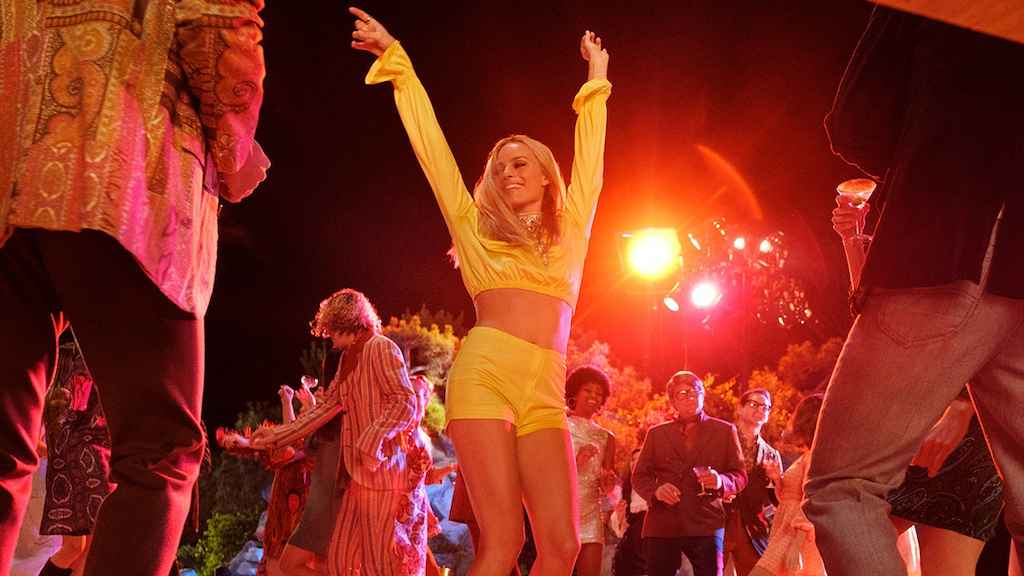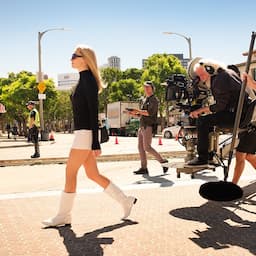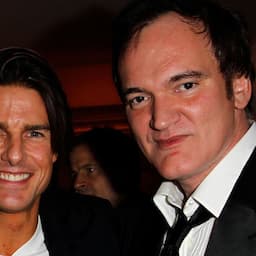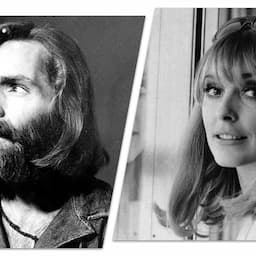Even if you think you can't spoil history, make sure you see the film first.
Spoilers, obviously, for the ending of "Once Upon a Time in Hollywood." Even if you think you can't spoil history, make sure you see the movie before reading on.
Once Upon a Time in Hollywood, the latest from writer-director Quentin Tarantino, is simultaneously a biopic, in a sense -- centered on Tinseltown's brightest stars at the twilight of the 1960s -- and something wholly fictional, a revisionist history in the vein of Tarantino's other Brad Pitt-starring vehicle, the 2009 WWII opus Inglourious Basterds. (That film started with a title card that read "Once upon a time...in Nazi-occupied France" and ended with Hilter being mowed down by machine guns.)
Once Upon a Time follows a similar format, introducing characters of Tarantino's creation -- Leonardo DiCaprio's fading TV cowboy, Rick Dalton, and Brad Pitt as his longtime stuntman, Cliff Booth -- against the very-real backdrop of Hollywood in the '60s, notably with the inclusion of the actress Sharon Tate (played by Margot Robbie) as Dalton's next-door neighbor.
Much of the film's epic runtime is made up of freewheeling vignettes of the three going about their lives in L.A. -- Dalton filming a guest-spot on the CBS series Lancer and Tate taking in a showing of her movie, The Wrecking Crew. Booth is the only one who glimpses the darkness descending upon their story, when he pays a visit to the Spahn ranch where Charles Manson and his followers reside.
Around the 2-hour mark, give or take, the story jumps forward in time -- to August 8, 1969 -- and adopts a new structure, with voice over and a timestamp accompanying Dalton, Booth and Tate's activities that day. Those with a knowledge of Tate's murder will recognize the date, as shortly after midnight, she was murdered by the Manson Family.
Once Upon a Time asks, "What would've happened if a margarita-swilling, flamethrower-wielding actor and his worrisomely violent sidekick lived on the same block?"
And that's where Tarantino begins to blend fact and fiction into his own buoyant, bloody ending to this fairy tale. Leading up to it, Tarantino doesn't do much heavy lifting in terms of setting up the who, what and why of the Manson murders -- Charles Manson himself (played by Damon Herriman) only appears in a single scene -- so if you aren't familiar with the specifics of the crime, things may become a bit confusing.
The night of the murders begins very much the way it did in real life, with Manson Family members Tex Watson (played by Austin Butler), Sadie Atkins (Mikey Madison), Katie Krenwinkel (Madisen Beaty) and Linda Kasabian (Maya Hawke, whose character is dubbed "Flowerchild") arriving on Cielo Drive to carry out Manson's orders. In reality, the quartet parked their car at the bottom of the street before continuing on to Tate's residence.
In the film, Dalton had been steadily growing incensed with the hippie influx in Hollywood, so when a bunch of cult followers noisily arrive in his cul-de-sac, he drunkenly gives them a piece of his mind and forces them to turn their car around. While they regroup in the car, Sadie pitches the idea of breaking into Dalton's house and killing him first. Thus, reality begins to bend.
Linda Kasabian, in reality, was instructed to serve as lookout and later testified that when the murders began, she started up their car and considered driving off. (She ultimately did not.) When the moment comes in the movie, Hawke's Flowerchild, spooked by Dalton, actually does drive off, leaving the other three behind.
Undeterred, Tex, Sadie and Katie continue on to Dalton's house. When Tex breaks in and Pitt's Booth asks who he is, he delivers the same line the real Tex did: "I'm the devil, and I'm here to do the devil's business." Then Once Upon a Time flips the script on the three Manson members, as Booth fights back and stabs, maims and bludgeons the interlopers, before Dalton roasts one with his flamethrower. It's the Manson Family who is left fighting for their lives and who ultimately die on Cielo Drive.
Now, whether this would have deterred Manson from the subsequent night's LaBianca murders is left up to interpretation. But Sharon Tate survives, as do would-be victims Jay Sebring, Wojciech Frykowski and coffee heiress Abigail Folger. Instead of the terrible fate that befell them in real life, the group caps the night of August 8 off by inviting Dalton over for a drink. Then the credits roll.
For a film that largely exists to preserve a certain era of Hollywood in amber, in many ways this is the perfect ending. Tate's murder has been cited as the end of that era, but if Tarantino rewrites history so that Sharon Tate was never killed, maybe those days of spaghetti Westerns and '60s naiveté would continue on, perhaps the Hollywood Tarantino is so wistful for wouldn't have died, either..
RELATED CONTENT:



